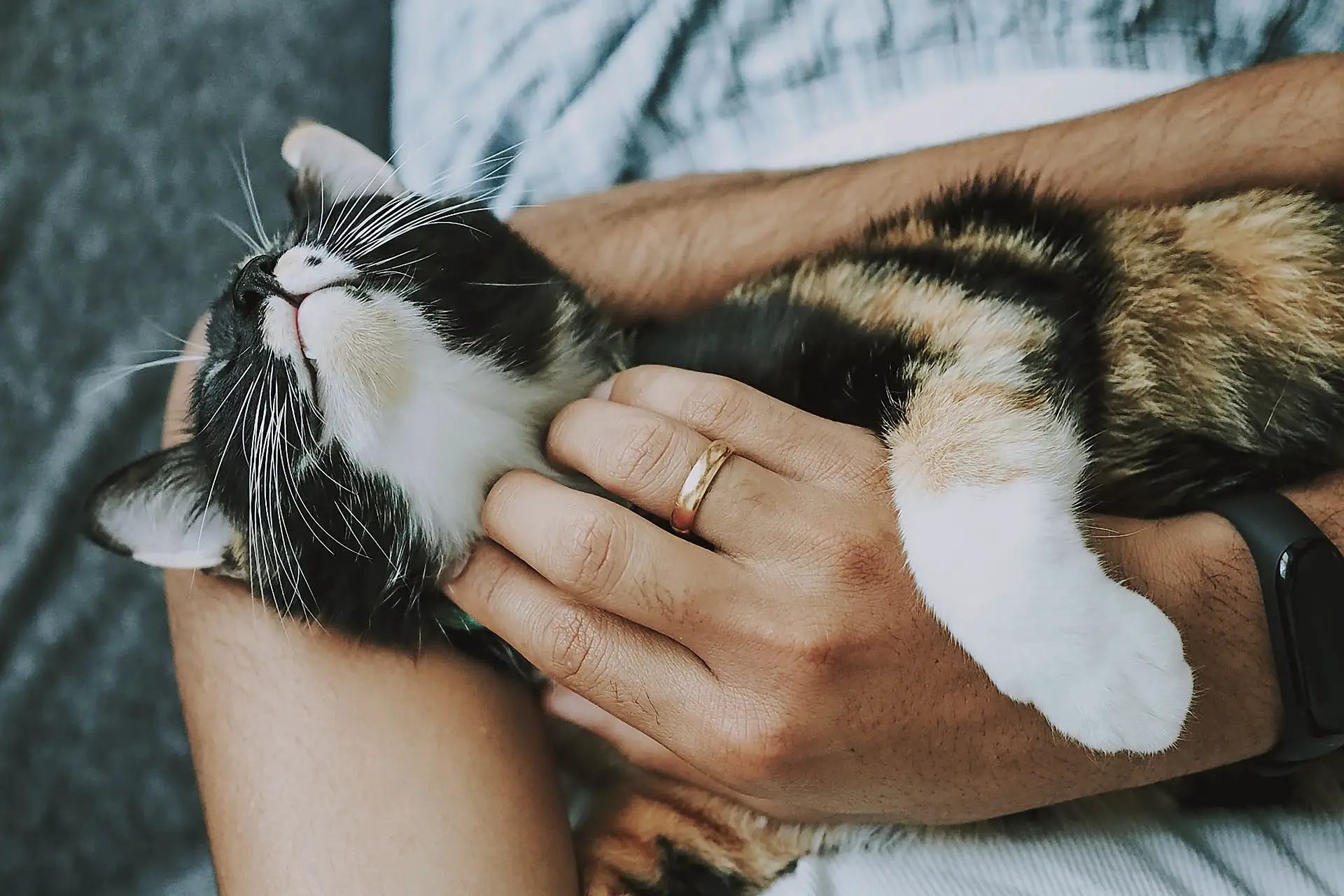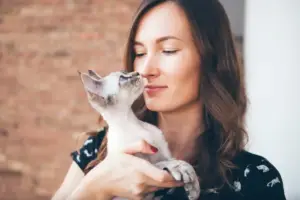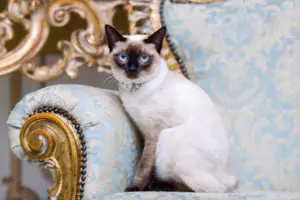Cats have long been cherished companions for humans, providing emotional support and companionship. One curious behavior many cat owners have encountered is their feline friends sitting on their chests. This peculiar behavior raises questions about its reasons and what it signifies regarding the cat-human bond. Understanding why cats sit on our chests can deepen our connection and enhance our understanding of their behavior.
The Bond Between Cats and Humans
The bond between cats and humans is a unique and special connection that has evolved over thousands of years. Cats have been domesticated for centuries, and their role as companions to humans has deeply influenced their behaviour and our understanding of them as pets. This bond goes beyond a simple coexistence; it is built on emotional attachment, companionship, and mutual benefits.
The evolution of cats as companions dates back to ancient civilizations, where they were valued for their hunting skills in controlling pests and protecting valuable resources such as grain stores. Over time, humans began to appreciate the presence of cats for their practical purposes and the emotional benefits they bring. Cats’ independent nature, mysterious allure, and grace have captivated human hearts, integrating them into our homes and lives.
The emotional benefits of cat-human interaction are profound. Numerous studies have shown that having a cat as a pet can contribute to improved mental health and well-being. Striking a cat’s fur and hearing its soothing purr can help reduce stress, lower blood pressure, and promote relaxation. Cats provide companionship, and their presence can alleviate loneliness and anxiety. Their nonjudgmental nature and unconditional love create a sense of comfort and emotional support.
Physical contact with cats, including sitting on the chest, significantly strengthens the bond between humans and their feline companions. Physical touch releases hormones like oxytocin, often called the “love hormone,” in humans and cats. When a cat sits on your chest, the physical closeness enhances the release of oxytocin, fostering feelings of affection and attachment. This physical connection is a tangible expression of the emotional bond between humans and their cats.
Moreover, the bond between cats and humans goes beyond physical touch. Cats are highly sensitive creatures and can sense our moods and emotions. They often provide comfort and companionship during challenging times, acting as reliable sources of support. Whether snuggling up next to you on the couch or simply being present in the same room, cats have an innate ability to offer solace and understanding without the need for words.
Cats’ Natural Behaviors
Cats exhibit a range of natural behaviors deeply ingrained in their genetic makeup. Understanding these behaviors is essential for cat owners to provide a suitable environment and meet their feline companions’ needs. Cats have evolved as solitary hunters, influencing their behavior even in domestic settings. Despite their reputation for independence, cats are social animals that form complex relationships within their social groups.
Territorial instincts play a significant role in a cat’s behavior. Cats have a strong need to establish and defend their territory. When a cat sits on your chest, it may be a way for them to mark you as part of their territory. They reinforce their sense of security and dominance by claiming ownership over you.
Additionally, cats engage in various social behaviors within their social groups. While they may appear independent, cats form strong bonds with their preferred human companions. Sitting on your chest can be a manifestation of this social bonding. By seeking close physical contact, your cat expresses their desire for companionship and security.
Why Does My Cat Sit on My Chest Explained
The behavior of cats sitting on their owner’s chest can have multiple explanations. One common reason is the desire for warmth and comfort. Cats are naturally drawn to warm areas, and your chest provides a cozy spot with the added benefit of body heat. Snuggling up on your chest allows them to bask in your warmth, creating a sense of comfort and security.
Another possible explanation for chest-sitting is the need for ownership and territorial marking. Sitting on your chest, your cat is claiming you as their territory. This behavior serves as a way for them to establish dominance and reinforce their position within the household. It can be seen as a sign of affection, as they view you as a valuable resource and want to assert their ownership over you.
Furthermore, chest-sitting can be a means for cats to seek attention and establish their dominance. Cats are known for their independent nature, but they also crave human interaction and attention. Sitting on your chest allows them to be near you, ensuring they have your undivided attention. It can also be their way of displaying dominance over you, reminding you of their presence and asserting their authority.
Factors Influencing Chest-Sitting
- Age and Stage of Development: Your cat’s age and stage of development can influence its behavior, including its preference for sitting on your chest. Kittens and young cats may engage in this behavior more frequently as they seek warmth and security.
- Individual Cat Personalities: Cats have distinct personalities, just like humans. Some cats may be more inclined to sit on your chest due to their inherent traits, such as being more affectionate or seeking closer physical contact.
- Human-Cat Relationship Dynamics: The relationship quality between you and your cat can also impact their chest-sitting behavior. If you have a strong bond and spend quality time together, your cat may feel more comfortable sitting on your chest.
Signs of Affection from Cats
Cats have their unique ways of expressing affection towards their human companions. Understanding these signs of affection can deepen the bond between you and your feline friend. One crucial aspect is recognizing and interpreting cat body language. Cats communicate through subtle cues that can convey their emotions and intentions.
When a cat sits on your chest, it is often a clear indication of trust and closeness. They demonstrate their comfort and contentment in your presence by choosing to be in such proximity. You can observe their body language for additional signs of affection. A gently swaying tail, relaxed posture, and soft purring indicate that your cat enjoys the interaction and cherishes the bond you share.
Tail movements can be particularly revealing. If your cat’s tail is held high and relaxed, it signifies happiness and affection. Conversely, a puffed-up or thrashing tail may indicate agitation or discomfort. Purring is another unmistakable sign of contentment, as cats often purr when they feel safe and content in their environment. Additionally, kneading or “making biscuits” with their paws is commonly associated with affection, as it mimics their kneading actions as kittens during nursing.
Addressing Common Concerns
While chest-sitting behavior may be endearing to some, it can raise concerns or pose challenges for others. One common concern is related to allergies and health considerations. Some individuals may experience allergies or respiratory issues when a cat sits on their chest. If you have allergies or health concerns, it is essential to consult with a healthcare professional to understand the potential risks and find appropriate management strategies.
Handling unwanted chest-sitting behavior can be approached through positive reinforcement techniques and providing alternative comfortable spots. Positive reinforcement, such as treats or praise, can reward your cat when they sit in a designated area nearby. Offering soft blankets or cushions in inviting locations can redirect their attention and provide alternative cozy spots that satisfy their need for warmth and closeness.
Promoting alternative behaviors is another effective approach. Encourage your cat to engage in activities like sitting beside you or on a nearby cushion, providing them with comfortable alternatives to chest-sitting. Redirect their attention to interactive toys or engage them in play sessions to fulfil their need for stimulation and companionship.
Addressing concerns and managing chest-sitting behavior can help create a harmonious environment for you and your cat. You can foster a loving and mutually satisfying relationship by understanding your cat’s natural behaviors and signs of affection and implementing appropriate strategies.
Comparison of Different Cat Breeds’ Behavior
Cats come in various breeds, each with unique characteristics and behavior patterns. While all cats share certain common instincts and behaviors, specific breeds may exhibit distinctive traits that set them apart. In this section, we will compare the behavior of four popular cat breeds: British Shorthair, Maine Coon, Ragdoll Cat, and Bengal Cats.
British Shorthair:
British Shorthair cats are known for their calm and reserved demeanor and tend to be independent and less demanding attention than other breeds. They are generally content with their company but enjoy gentle interactions with their human companions. British Shorthairs are often described as dignified and undemanding, making them suitable for individuals seeking a more low-key and less clingy companion.
Maine Coon:
Maine Coon cats are known for their friendly and pleasant nature. They are often called the “gentle giants” of the cat world due to their large size and affectionate temperament. Maine Coons are highly interactive and enjoy being part of the family. They are often good with children and other pets, and their playful and outgoing nature makes them a popular choice for families seeking an active and engaging companion.
Ragdoll Cat:
Ragdoll cats are known for their docile and gentle nature. They tend to go limp when picked up, hence their name. Ragdolls are often described as very relaxed and tolerant, making them well-suited for households with children or other pets. They enjoy human company and are often found by their owners’ side, craving attention and affection. Ragdolls are generally easygoing and adaptable, making them popular for those seeking a laid-back and affectionate companion.
Bengal Cats:
Bengal cats are known for their high energy levels and playful nature. They have a strong prey drive and often engage in interactive play. Bengal cats are intelligent and require mental and physical stimulation to prevent boredom. They enjoy climbing, exploring, and interactive toys. Bengals may have a more active and demanding personality than some other breeds, making them a good fit for individuals or families who can provide ample exercise and stimulation.
While these descriptions provide a general overview of each breed’s behavior, it’s important to note that individual cats within a breed can vary in their personalities and behaviors. Environmental factors, socialization, and individual experiences also significantly shape a cat’s behavior. When considering a specific breed, it is essential to research. It interacts with individual cats to better understand their unique characteristics and determine if they align with your lifestyle and preferences.
People Also Ask
Why does my cat sit on my chest when I’m lying down?
Cats may sit on your chest when you’re lying down because it offers them a close and comfortable position to be near you. They may enjoy your body’s warmth and security and see it as an opportunity for bonding and physical contact.
Is it normal for cats to sit on your chest while you sleep?
Yes, it can be normal for cats to sit on your chest while you sleep. Cats are crepuscular animals that are most active during dawn and dusk. They may seek your chest as a cozy spot to sleep or enjoy being close to you during these quiet hours.
How can I prevent my cat from sitting on my chest?
If you prefer your cat not to sit on your chest, providing alternative comfortable spots nearby can redirect their attention. Place a soft blanket or cushion beside you, offering an inviting area for them to rest. Positive reinforcement techniques can also reward your cat when they choose these alternative spots.
Why does my cat only sit on my chest and not on other family members?
Cats may have individual preferences when choosing whom they sit. Your cat may have formed a particularly strong bond with you, finding your chest a comforting and secure place. It could be due to the unique dynamics of your relationship and the level of trust and familiarity they feel towards you.
Should I be concerned if my cat suddenly stops sitting on my chest?
If your cat suddenly stops sitting on your chest, it is not necessarily a cause for concern. Cats’ preferences and behaviors can change over time. However, if your cat’s behavior changes or they show other signs of distress or illness, it may be worth consulting with a veterinarian to rule out any underlying health issues.
Expert Insights and Opinions
Quotes or opinions from veterinarians or animal behaviorists can provide additional perspectives on cat behavior and offer valuable insights into chest-sitting behavior.
Conclusion
Understanding why cats sit on our chests is an important aspect of comprehending their behavior and strengthening the bond we share with them. By recognizing the reasons behind this behavior and addressing any concerns or discomfort, we can enhance our relationship with our feline companions. Embracing and understanding cat behavior enriches our lives and allows us to provide the care and affection they need.





